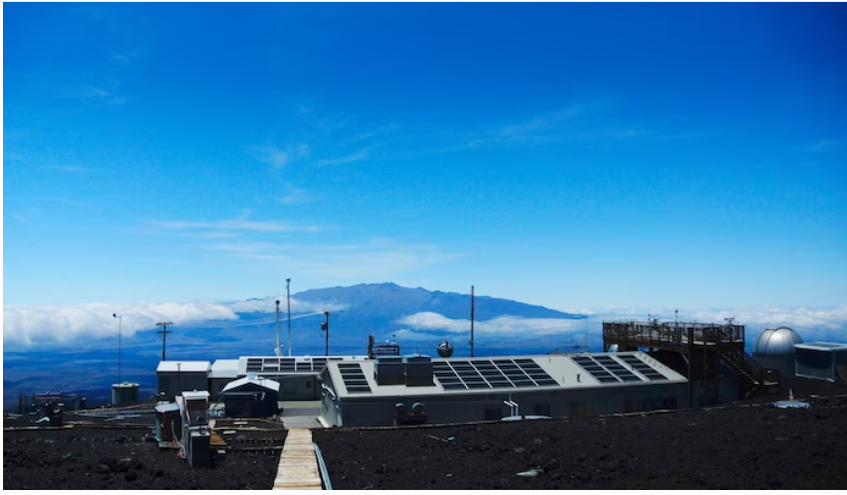The new figures offer more evidence that global climate efforts — including transitioning from fossil fuels to cleaner energy — are falling short of what scientists say is needed to stem the warming of the planet.
Carbon dioxide levels in May averaged 424.0 parts per million (ppm) — the fourth-largest annual increase since measurements began 65 years ago at the NOAA observatory in Mauna Loa, Hawaii.
The highest monthly mean levels of CO2 peaks occur in May for the Northern Hemisphere — just after plants ooze the gas before growing season. May’s monthly average this year sat at 423.78 ppm, a 3.0 ppm increase over May 2022’s average.
Carbon dioxide — which is generated by burning fossil fuels for transportation and electrical generation, by cement manufacturing, deforestation, agriculture and many other practices — traps heat from the planet’s surface that would otherwise escape into space. Carbon dioxide pollution, a key greenhouse gas, amplifies extreme weather events, such as heat waves, drought and wildfires, as well as precipitation and flooding.
“Whatever we’re seeing weather-wise now is just the beginnings of much bigger changes,” Keeling said.
In a March report, the IEA stated that global emissions of carbon dioxide related to energy production grew by 0.9 percent in 2022, reaching a new high of more than 36.8 billion metric tons.
During El Niño, drying tropical vegetation and savannas contribute to higher C02 levels, Keeling said. The previous La Niña cycle has contributed to slightly slower growth rates.
“I expect the news next year to look even worse,” Keeling said.




